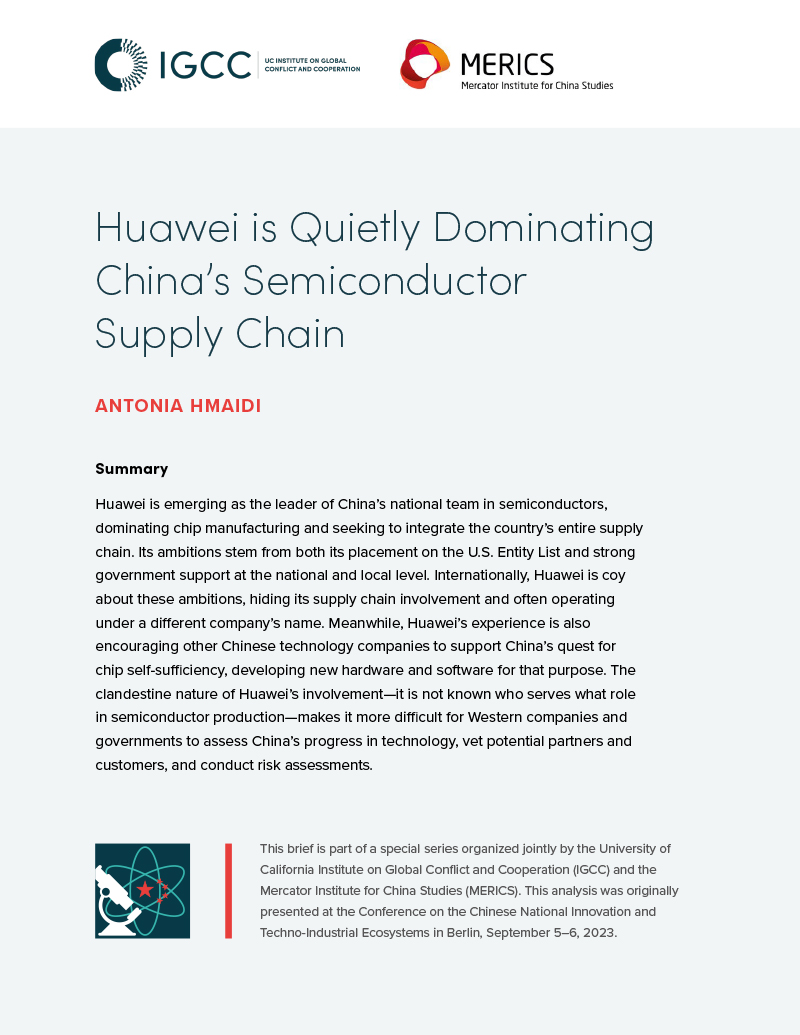Huawei is Quietly Dominating China’s Semiconductor Supply Chain

In the brief, Antonia Hmaidi writes about Huawei, a company emerging as the leader of China’s national team in semiconductors, dominating chip manufacturing, and seeking to integrate the country’s entire supply chain. Hmaidi explores how the company’s clandestine nature makes it more difficult for Western companies and governments to assess China’s progress in technology, vet potential partners and customers, and conduct risk assessments.
DownloadIn this policy brief, Antonia Hmaidi, Senior Analyst in the Science, Technology and Innovation Program at MERICS, analyzes Huawei, a company that is emerging as the leader of China’s national team in semiconductors, dominating chip manufacturing and seeking to integrate the country’s entire supply chain. Its ambitions stem from both its placement on the U.S. Entity List and strong government support at the national and local level. Internationally, Huawei is coy about these ambitions, hiding its supply chain involvement and often operating under a different company’s name. Meanwhile, Huawei’s experience is also encouraging other Chinese technology companies to support China’s quest for chip self-sufficiency, developing new hardware and software for that purpose. The clandestine nature of Huawei’s involvement—it is not known who serves what role in semiconductor production—makes it more difficult for Western companies and governments to assess China’s progress in technology, vet potential partners and customers, and conduct risk assessments.
This brief is part of a special series organized jointly by the University of California Institute on Global Conflict and Cooperation (IGCC) and the Mercator Institute for China Studies (MERICS). This analysis was originally presented at the Conference on the Chinese National Innovation and Techno-Industrial Ecosystems in Berlin, September 5–6, 2023.
Thumbnail credit: The Oxford Blue